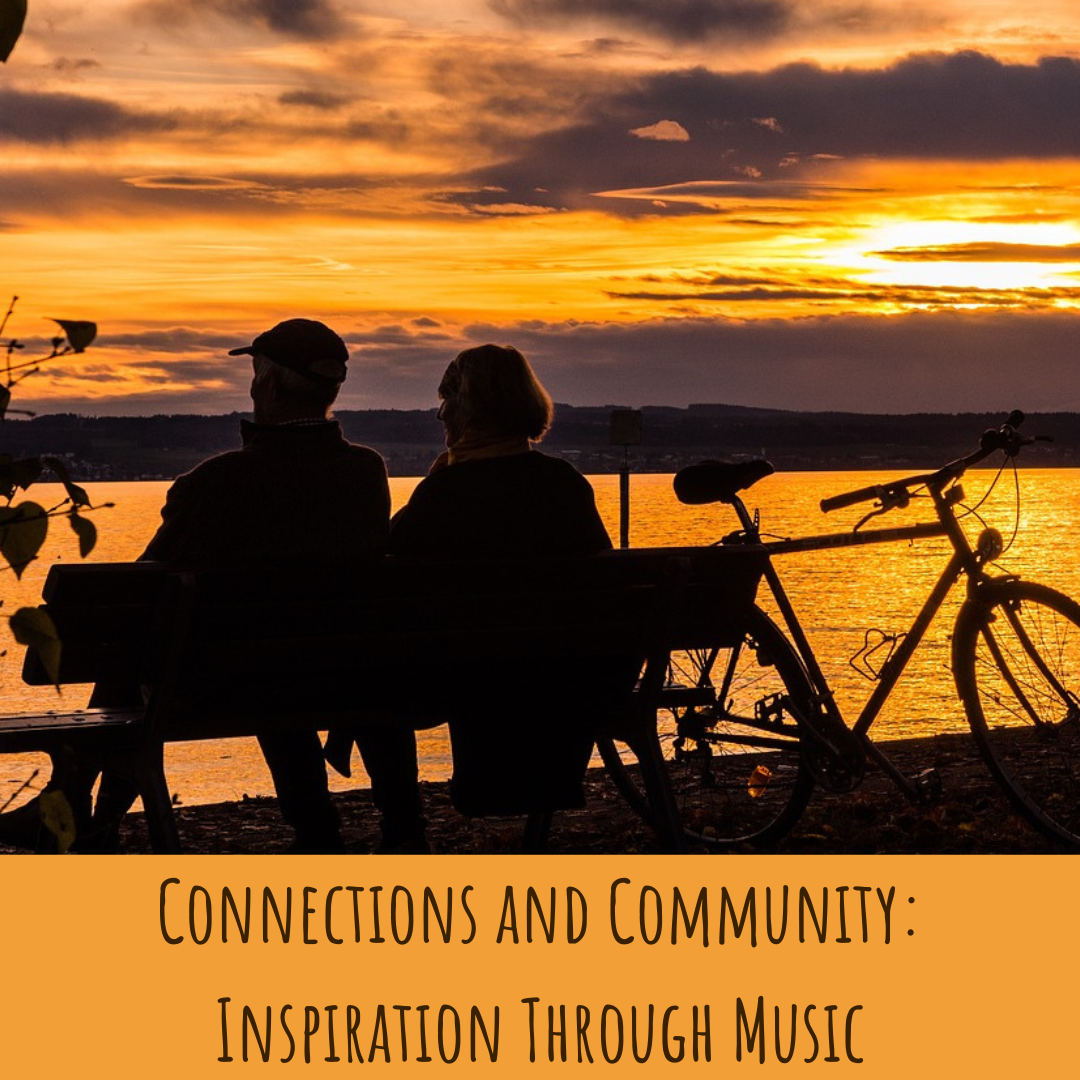10 Places Where History Comes Alive in Munich
The capital of Bavaria, Munich, has a plethora of historical sites. However, time was not in our favor. Our first trip was limited to just a couple of days of touring. To sample Munich’s history, we relied on a friend and our private guide, Chaim Eytan, to show us around. Perhaps a future trip will provide more options. For the time being, here are 10 places where history comes alive in Munich.

Marienplatz—Old Town Hall and New Town Hall
With hundreds of years of history, Munich’s main town square, also known as St. Mary’s Square, could fill up dozens of books with stories. Photo opportunities include the New Town Hall built from the end of the 19th century into the beginning of the 20th century. When Chaim asked the age of the building, I thought it was considerably older, due to its Flanders Gothic style.
It is hard to miss the 280-foot clock with a 28-foot tall Glockenspiel, the tallest in Germany. Our timing wasn’t great. We missed the figurines moving at 11 am, 12 pm, and 5 pm. It is possible to take an elevator to the observation deck.
The Old Town Hall, originally constructed in the 15th-century, was destroyed during World War II and later restored. It was named the Old Town Hall when the government moved to the New Town Hall. As a kid at heart, I wish we had more time to visit the toy museum located inside. The tower is a city landmark and another photo opportunity. Nearby, one can see the twin towers, iconic structures of the Munich’s skyline.

Munich's Twin Towers
While exploring the area, we came upon an outdoor food market where people were enjoying the sunny, weekend afternoon while eating and drinking beer. The marketplace was filled with locally grown produce, meat and dairy items, fresh-cut flowers, and a tempting array of freshly prepared food. Beer is definitely a staple in Munich. Beer drinkers congregated throughout the site.

Munich Food Market
Nymphenburg Palace
The House of Wittelsbach built this royal home back in the mid 17th century in what was then considered the countryside. Agostino Barelli, an Italian architect, designed the original rural complex. The palace and the adjacent grounds were modified, and more buildings were added in the following century to accommodate the royal family’s needs. Other modifications were undertaken in the 19th century when the English gardens replaced the French gardens.

18th century Magdalenenklaus on grounds of Nymphenburg Palace
Today, the palace is part of Munich’s west side neighborhood and covers almost 500 acres. It is considered one of the largest royal palaces in the world. Onsite attractions include a tour of the palace, the Museum of Carriages and Sleighs, the Museum of Nymphenburg Porcelain, the Erwin von Kreibig-Museum showcasing the painter’s work, the Museum of Mankind and Nature and, on the north side of the park, the Munich Botanical Gardens. Gondola rides on the lakes are available from April to mid-October.

Nymphenburg Palace and Gardens
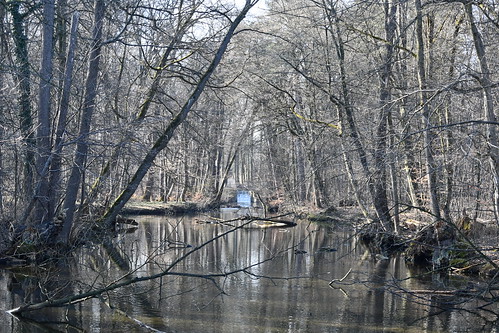
Stroll on Nymphenburg Palace grounds
Hotel Laimer Hof
Our conveniently located accommodations at the Hotel Laimer Hof offered terrific access to the beautiful palace pathways. During our early morning stroll, we passed groves of mature trees with streams, lakes with ducks and swans, a restaurant, and a couple of pavilions. Since it was early spring, we had to imagine how our surroundings would bloom in just a few weeks.
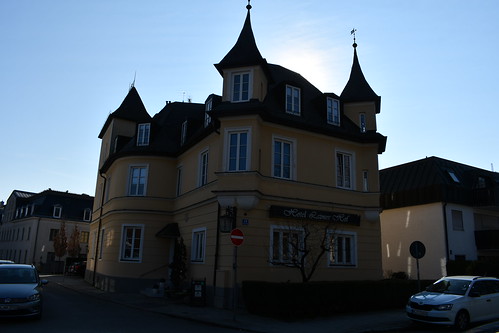
Exterior of Hotel Laimer Hof
This family-owned small boutique hotel, built in1886, is situated in a quiet residential neighborhood. Expressing a notable neo-Renaissance villa design, the yellow-colored hotel is one of the oldest buildings in the area.
I cannot recall another place where we shared a round of beers with the owner of a hotel. After a hearty greeting, Sebastian made us feel welcome by offering numerous suggestions to nearby attractions. He graciously helped us carry our luggage up and down the staircase and provided exceptional hospitality throughout our stay. A breakfast buffet was included.
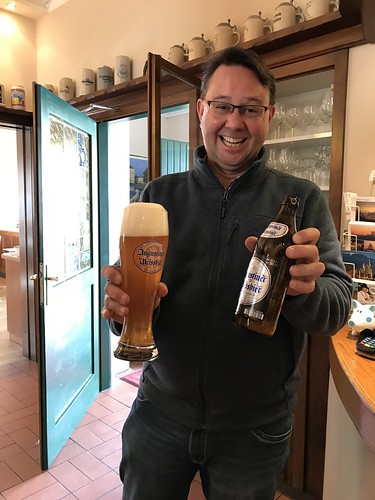
Warm greeting by Sebastian at Hotel Laimer Hof
1972 Olympic Park
The 1972 Summer Olympics was hosted in Munich. This was the year that Mark Spitz won seven gold medals in world record time. This record was not broken until 2008 when Michael Phelps earned eight gold medals. It was the first time that Germany had held an Olympics since the Nazis hosted the summer games in 1936.
After the Olympics, the facilities were converted into a recreational center offering a variety of activities and venues for festivals and concerts. The picturesque 740-acre park, enhanced with paths and lakes, is also the location of the Olympic Tower, a former television tower predating the Olympic games. The tower offers panoramic views of the city.
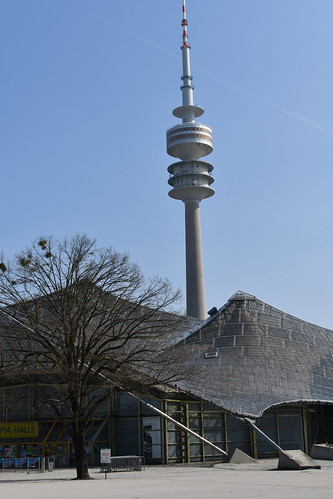
Munich's Olympic Park
Munich 1972 Massacre Memorial
Generations later, time has dulled peoples’ memories of the atrocity that occurred during the 1972 games when a Palestinian terror group, the Black September Organization, killed two Israelis and proceeded to take nine Israeli athletes and coaches hostages. During the failed rescue attempt at a German Air Base, three out of the eight terrorists were killed. The terrorists killed the Israeli hostages and a German police officer.
For over four decades, the victims’ families waited for an appropriate memorial to be built. For too long, a simple, horizontal stone memorial with the names of the victims and the German policeman, together with a plaque outside the former Israeli apartment, were the only items that memorialized the horrific attack.
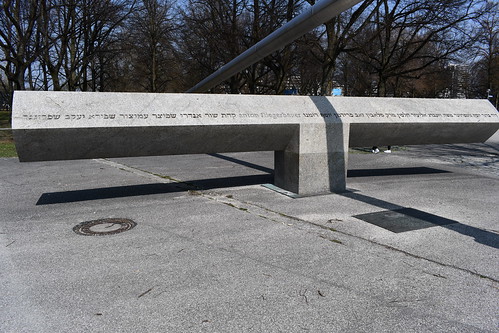
Original memorial for 1972 massacre
Two of the Israeli widows, Ankie Spitzer and Ilana Romano, organized the persistent efforts to lobby for a meaningful memorial. They did not give up until their voices were heard. The memorial finally opened in 2017.
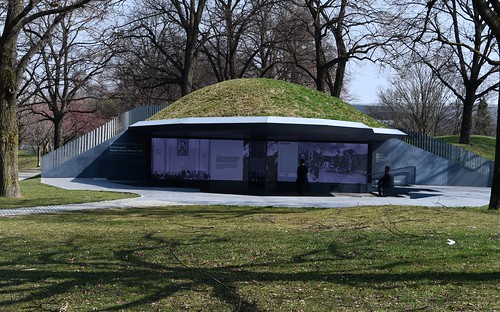
Munich 1972 Massacre memorial
The grass-roofed memorial is carved into an Olympic Park hill. Visitors can either stand or sit while watching a multi-media presentation projected on oversized screens about the Israelis’ lives and the tragic event. The human element is considerable when reading the biographies, looking at personal effects, and watching the video. To understand the ramifications of modern terrorism, one must take time to remember the lives that are abruptly ended when the sanctity of life is not respected.
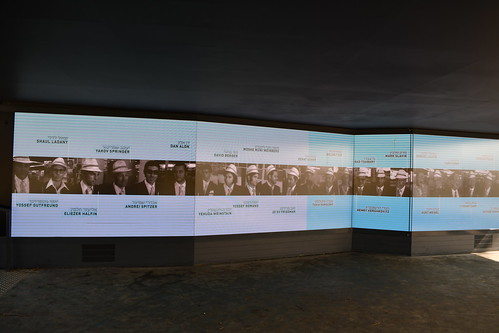
Displays at Munich 1972 Massacre Memorial
Jewish Museum Munich
The Jewish Museum reminds patrons on one of its displays that a significant number of Jewish items were lost during the years leading up to the Holocaust as well as during World War II. While it will never be possible to retrieve what was destroyed by the Nazis, this museum attempts to fill in some of the gaps.
A timeline on a long wall combined with the museum’s display cases illustrate a cross-section of Jewish history. Near this space is an interactive floor map. Moving oversized numbered markers, visitors can physically connect with different historical events tied to ninety-nine places in the city. Each of the locations is linked to images on the wall. When the marker is placed in the appropriate spot, a person associated with the designated place tells a story.

Interactive exhibit at the Jewish Museum
Another exhibit focuses on a collection of items found during the renovation of Munich’s former cattle market. An assortment of objects dating from the early 19th-century, including two Hebrew books, were uncovered during the renovation process. Historians believe that these books did not disintegrate because they were protected in a geniza, a storage area for worn-out sacred and religious items.
The Seven Crates of Jewish Material room showcases items salvaged from the ruins of the Wurzburg museum building that was bombed during World War II. It is believed that the partially melted and distorted items were confiscated from several synagogues during Kristallnacht, the Night of the Broken Glass.

Salvaged Synagogue items from ruins of Wurzburg Museum
It was especially disturbing to read a passage about the Miltenberg Synagogue disclosing that the synagogue “was desecrated by school pupils, supervised by their teachers.”
Another sign stated, “Between 1941 and 1944, 2068 Jews from Lower Franconia were deported…Only sixty-two survivors returned.”
All of the signage is in English and German. However, at the time of my visit, the bookstore did not sell any books written in English regarding Munich’s Jewish history.
The Jewish Museum is located in St. Jakobs-Place adjacent to the Jewish Community Center and Ohel Jacob synagogue. The museum is surprisingly closed on Mondays, but open on the Jewish Sabbath (Saturday).
Beer Gardens and Beer Halls
Germans have been consuming beer for centuries. With hundreds of options in Munich, it would be difficult not to take partake in this cultural experience. Chaim took us to the Chinesischer Turm Restaurant and Biergarten located near the Chinese pagoda in the English Gardens.
Even though it was mid-afternoon, we confronted a huge crowd waiting in line for food at food counters offering myriad of choices. Without knowing the available food items, it was hard to see the options through the masses of people. It was equally challenging to find a spot at one of the outdoor green picnic tables adjacent to the Chinese pagoda. Chaim told us that it is Munich’s second-largest beer garden with thousands of seats inside and outside.

Chinesischer Turm Restaurant and Biergarten
Later on, we passed by the Hofbräuhaus, Munich’s most extensive beerhouse and a popular tourist spot. Many come for the beer that dates back to the 16th century. The vaulted, hand-painted ceilings with colorful decorations added volume to a noisy room filled with boisterous patrons. The stuffy air, coupled with a sticky floor, encouraged an early escape from the premises.
Before entering, Chaim informed us about the restaurant’s troubling history. Starting with Hitler’s rise to power, the Hofbrauhaus was the site of many National Socialist meetings and proclamations. It was hard to erase that image as we walked around.

Inside Hofbrauhaus
Dachau
Visiting the Dachau Concentration Camp Memorial Site offered a connection to the past. Until visiting Dachau, many of the images embedded in my brain derived from the footage filmed by the American war reporters who accompanied the liberators on April 29, 1945.
Starting in 1933, the Gestapo used concentration camps to impose terror and fear into the population. People entering Dachau could be executed without any trial. During the war years, prisoners were tortured, murdered, used as human guinea pigs for horrendous medical experimentation, and deployed as slave labor for nearby factories.
As long as people take the time to visit concentration and death camps, the word “Dachau” will continue to strike a sharp chord in humanity’s moral compass. Ignorant individuals who fail to study history and prefer not to visit places evidencing the Nazis’ reprehensible behavior should refrain from comparing any present-day event to what occurred at Dachau and the other camps.
Disappointingly, far too many educated people have no understanding of the magnitude of the Holocaust. To learn more about my Dachau visit, consider reading my Canadian Jewish News story.

Dachau
Internationale Jugendbibliothek (International Youth Library Foundation)
The International Youth Library is currently located in the 15th-century Blutenburg Castle in the Obermenzing Quarter. Both the medieval structure and the modern organization have notable histories.
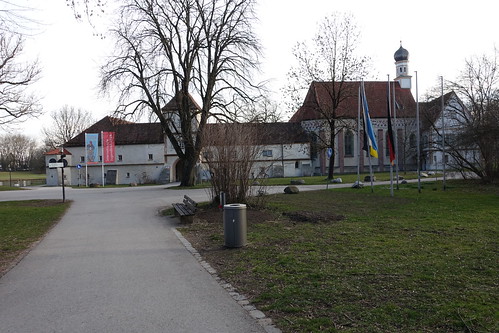
Blutenburg Castle
Duke Albrecht III of Bavaria was smitten by a young woman named Agnes, the daughter of a public bath owner. His decision to marry Agnes went against society’s norms. Back then, royalty simply didn’t mix with commoners. Albrecht’s father, Duke Ernst, was less than thrilled with his son’s choice and also disapproved of his castle sitting prominently on an island of the Würm River.
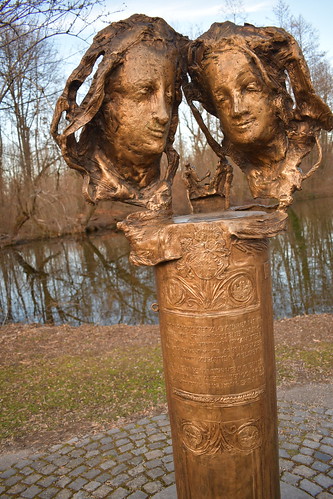
Statues of Duke Albrecht and Agnes
After sending his son out of town, he arranged for his daughter-in-law’s murder. A statue recalls this tragic story. Additional buildings were added in subsequent years. In the 16th century, the grounds were the only place where dukes could hunt for small game. A visit to Blutenburg Castle offers the opportunity to see a 15th-century moated castle. The palace chapel is open to the public.
In 1949, Jella Lepman (1891-1970), a Jewish officer in the United States Army and former political journalist, initiated a reeducation program for German youth. With the help of international publishers, Lepman used children's books to educate post-World War II youth about peace and freedom. She organized a mobile library using army buses. Using funding from the Rockefeller Foundation, Lepman established the International Youth Library, and directed the institution until 1957.
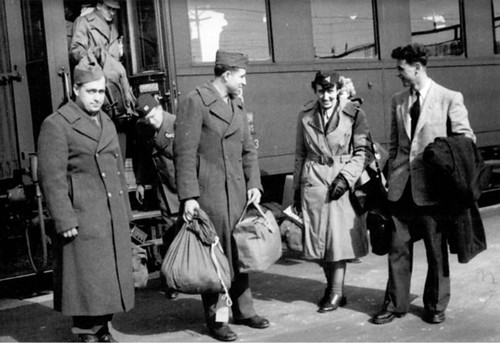
Jella Lepman. Photo: International Youth Library.

Inside International Youth Library
In the past few decades, the Foundation has promoted multi-cultural education for children and young adults through its workshops, programming, and preservation of diverse literature. A colorful reading room with storybook artwork encourages reading, and the library collection includes more than 600,000 books in approximately 130 languages. In September, this institution celebrated its 70th birthday.
White Rose Memorial at the University of Munich
To recall the students and professors who stood up against the Nazis, we walked to the Central Hall building on the University of Munich campus. In the Geschwister-Scholl Platz (Scholl Sibling Square), Chaim directed our attention to the bronze replicas of White Rose pamphlets embedded into the sidewalk.

White Rose Memorial in Geschwister-Scholl Platz
From 1942 to 1943, a group of brave individuals referred to as the White Rose distributed anti-Third Reich pamphlets. Three of the group’s leaders advocated non-violent resistance after they witnessed the SS murdering Jewish civilians in Poland. Their efforts were curtailed when members were caught and tried for their actions. Three were executed, and others were imprisoned. One of the outdoor fountains is dedicated to Hans and Sophie Scholl, and another one is dedicated to Professor Huber. There is a small museum inside the Ludwig Maximilian University that is open every day except for Sunday.
As an American Jewish woman touring Germany for the first time, my itinerary at times was admittedly unbalanced. Many of the Munich sites were geared to gaining a better understanding of the events associated with the Holocaust and Jewish history. With the National Socialist German Workers’ Party (NSDAP) headquarters in Munich, it is not surprising that our guide focused on a disproportionate number of historical sites tied to the Holocaust and World War II. By visiting these places, history came alive in Munich.
Sandy Bornstein, the History Comes Alive Through Travel Editor for Wandering Educators, has visited more than 40 countries and lived as an international teacher in Bangalore, India. Sandy’s award-winning book, May This Be the Best Year of Your Life, is a resource for people contemplating an expat lifestyle and living outside their comfort zone. Sandy writes about Jewish culture and history, historical sites, family, intergenerational, and active midlife adventures highlighting land and water experiences.
All photos courtesy and copyright Sandy Bornstein.
Munich Tourism sponsored the author’s private tour of Munich and Dachau. The Hotel Laimer Hof provided a complimentary stay.



















